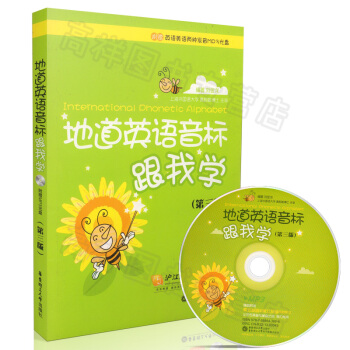

具体描述
| |
基本信息
书名:工业工程专业英语
:39元
作者:王爱虎编
出版社:北京理工大学出版社
出版日期:2013-5-1
ISBN:9787564077099
字数:431000
页码:312
版次:3
装帧:平装
开本:大16开
商品标识:
编辑推荐
王爱虎编著的《工业工程专业英语(第3版)》突出了对专业词汇的介绍,与普通英语的教学有很好的衔接;内容基本上涵盖了工业工程的知识体系;兼顾了对基础和现代工业工程的理论和方法的介绍;在对工业工程基本概念、理论和方法进行介绍的同时,还重点对该领域新发展动态做了解读;突出了工业发达国家的学者和从业人员对工业工程发展过程中经验的总结、思考和对未来的展望;大部分内容选自高水平国外刊物,有很强的前瞻性,有利于高年级本科生、研究生,乃至博士生的论文写作。
内容提要
王爱虎编著的《工业工程专业英语(第3版)》系统介绍了工业工程领域的概貌、发展历程和发展趋势,清晰地勾勒出工业工程的知识体系。
全书共6篇(24章),分别是:对工业工程的认识、基础工业工程、现代工业工程、丰田制造模式、工业工程前沿和工业工程展望。编者对每篇文章中的主要专业词汇和晦涩难懂的句子进行了详细注释和解读,并结合文章内容和国内工业工程的管理实践提出了相关问胚供读者思考。为方便读者查阅和使用,在书末还附有工业工程专业词汇汇总表。
《工业工程专业英语(第3版)》既可以作为工业工程专业本科生的专业英语教材使用,也可以作为该领域专业硕士和博士研究生论文写作的参考用书。同时,也可以作为其他专业的学生和从业人员快速了解工业工程领域发展历程、内涵和趋势的专业参考书。
目录
第一篇对工业工程的认知
CHAPTER 1Industrial Engineering Education for the 21stCentury
1.1Introduction
1.2Quality in IE education
1.3Theory and practice
1.4Curriculum integration
1.5Role of the IE
1.6Ethics in education
1.7Curriculum assessment
1.8Conclusions
CHAPTER 2Real IE Value
2.1Introduction
2.2The name game
2.3Curriculum
2.4Other steps第一篇对工业工程的认知
CHAPTER 1Industrial Engineering Education for the 21stCentury
1.1Introduction
1.2Quality in IE education
1.3Theory and practice
1.4Curriculum integration
1.5Role of the IE
1.6Ethics in education
1.7Curriculum assessment
1.8Conclusions
CHAPTER 2Real IE Value
2.1Introduction
2.2The name game
2.3Curriculum
2.4Other steps
2.5Expectations
2.6Future directions
2.7More challenges
CHAPTER 3Grand Challenges for Industrial Engineering in the21st Century
3.1Background and introduction
3.2NAE grand challenges
3.3IIE council of fellows role for industrialengineering
3.4A research and contribution plan for industrialengineering
3.5Futurizing the IE curriculum
3.6Summary and conclusions
第二篇基础工业工程
CHAPTER 4Operations Research
4.1Brief history
4.2Some OR accomplishments
4.3An outlook on a research agenda
CHAPTER 5Work-Measured Labor Standards
5.1Introduction
5.2Developing standard times
5.3Maintaining standard times
5.4Summary
CHAPTER 6Ergonomics
6.1The origin of ergonomics
6.2A system description of ergonomics
6.3The goal of safety
6.4The goal of productivity
6.5The trade-off between productivity andsafety
6.6The goal of operator satisfaction
6.7Conclusion
CHAPTER 7Research Challenges and Recent Progress in NextGeneration Factory Layouts
7.1Introduction
7.2Emerging trends in industry
7.3Next generation factory layouts
7.4Research challenges
CHAPTER 8Operations Management
8.1Celebration of history and accomplishments
8.2The challenges of the 1970s and 1980s and theresponse
8.3The departments history and current editorialmission
8.4The way forward
CHAPTER 9The Role of IE in Engineering Economies
9.1Introduction
9.2Engineering economics
9.3Steps in the evaluation process
9.4Analytical problems encountered
9.5Tools of engineering economy
9.6The potential of IE for the firm
CHAPTER 10Systems Engineering and EngineeringManagement.
10.1Nature of system development
10.2Systems engineering and engineeringmanagement
10.3Overlap, difference, and synergies
第三篇现代工业工程
CHAPTER 11Concurrent Engineering
11.1Introduction
11.2The training philosophy
CHAPTER 12New Product Development
12.1Introduction
12.2What is the Front End?
12.3A well-engineered front-end process
12.4Balancing front-end explicitness andflexibility
12.5Diagnosing front-end activities
12.6Managing the transition
12.7Conclusion
CHAPTER 13Computer Integrated Manufacturing (CIM)
13.1Computer-aided design
13.2Computer-aided engineering
13.3Computer-aided manufacturing
13.4Networks
13.5Other key elements of factory automation
CHAPTER 14The Evolution of Simulation
14.1Introduction
14.2The early days
14.3Technical factors in simulation development
14.4Organizational factors
14.5Concluding summary
第四篇丰田制造模式
CHAPTER 15Classification of JIT Techniques
15.1JITs pure engineering elements
15.2Workers operations/activities as JITelements
15.3Japanese management-related elements of JIT
15.4Is the classification justifiable?
15.5Significance of the classification
15.6Lessons
15.7Summary
CHAPTER 16Industrial Engineering of the Toyota ProductionSystem
16.1Introduction
16.2Continuous material flow
16.3Holisticview of TPS
16.4Ancient rite of waste elimination
16.5Three pathways
16.6The Gilbreths four step approach
16.7Origin of the MOI2 process chart
16.8Contemporary industrial engineering
16.9Shigeo Shingo and the JMA
16.10Discussion
16.11Conclusions
CHAPTER 17Toyotas Practical Thinking Shared Among ItsEmployees-
17.1Introduction
17.2Literature review
17.3Research approach
17.4Conclusions
第五篇工业工程前沿
CHAPTER 18Total Quality Management
18.1Introduction
18.2The research problem
18.3The critical dimensions of TQS
18.4Summary
CHAPTER 19Agile Manufacturing
19.1Introduction
19.2Agile manufacturing -- definitions
19.3Agile manufacturing strategies andtechnologies
19.4A framework for the development of agilemanufacturing
19.5Summary and conclusions
CHAPTER 20Theory of Constraints
20.1Introduction
20.2Historical background and basic concepts ofTOC
20.3Issues and research opportunities
CHAPTER 21Experimental Economies and Supply ChainManagement
21.1Introduction
21.2Why do we need an experiment?
21.3The beer distribution game
21.4Behavioral causes of the bullwhip effect
21.5Methods for reducing the bullwhip effect
21.6Conclusions and lessons for managers
第六篇工业工程展望
CHAPTER 22The Evolution of Information Systems and BusinessOrganization Structures
22.1Introduction
22.2Early developments
22.3Computers in business
22.4Growth of information systems and businessorganizations
22.5Integrating computer architectures andorganizational structures
22.6The impact of computers on organizations
22.7Phases of the computerization inorganizations
22.8Linkages between computers and organizationalstructures
22.9Implications for emerging and futureorganizations
22.10Internet, stand-alone computers and smallbusinesses
CHAPTER 23The New IE: Information Technology and BusinessProcess Redesign.
23.1Introduction
23.2IT in business process redesign
23.3Redesigning business processes with IT: fivesteps
23.4Defining process types
23.5Management issues in IT-enabled redesign
23.6Summary
CHAPTER 24Post Industrial Engineering
24.1Introduction
24.2Methods
24.3The history of work studies in IE
24.4The changing nature of work
24.5Bringing work back into IE
Summary of Professional Vocabularies and Expressions
Bibliography
作者介绍
暂无
文摘
暂无
媒体推荐
暂无
用户评价
我之前在工作中接触过一些工业工程相关的项目,但总感觉理论基础不够扎实,很多时候都是摸着石头过河。这次听说有这本《工业工程专业英语》出版,就抱着试试看的心态买了。翻阅之后,我发现这本书的内容组织非常有条理,从最基础的词汇和短语开始,逐步深入到复杂的专业术语和学术论文的阅读技巧。最让我惊喜的是,它还包含了很多实际案例的分析,这些案例都来自于真实的工业生产场景,让我能够更好地理解书本上的理论知识是如何在实际工作中应用的。而且,这本书的例句非常贴切,很多都是我在工作中经常会遇到的表达方式,学习起来效率很高。我特别喜欢里面关于质量管理和供应链管理的章节,内容非常详实,而且解释得很清楚,对于我这样有一定实践经验但理论稍显不足的读者来说,简直是雪中送炭。
评分这本书的封面设计挺吸引人的,简洁的风格,以工业工程的元素为主题,颜色搭配也很协调,给人一种专业、严谨的感觉。拿到手后,它的纸张质量也相当不错,厚实且有质感,印刷清晰,没有毛边毛刺,装订也很牢固,这一点对于经常翻阅的教材来说非常重要,能够保证书籍的耐用性。整体而言,这本书在外观和触感上都给我留下了非常好的第一印象,让人充满期待去翻开阅读。我尤其喜欢封面上的插画,虽然只是简单的线条勾勒,但却精准地传达了工业工程的核心概念,比如流程优化、生产线布局等等,这些细节都体现了编者在书籍设计上的用心。北京理工大学出版社作为国内知名的学术出版社,在图书的制作工艺上一直有着很高的水准,这本书也不例外,完全符合我对一本优质学术专著的预期。
评分我是一名初入工业工程领域的学生,对于专业知识的掌握还处于起步阶段。在学习过程中,我发现很多优秀的学习资源都是英文的,这让我倍感困扰。在老师的推荐下,我购买了这本《工业工程专业英语》。这本书的语言风格非常亲切,就像一位经验丰富的老师在循循善诱。它没有直接堆砌晦涩难懂的专业术语,而是从基础的句子结构和常用表达开始,循序渐进地引导我掌握工业工程领域的专业英语。书中的插图和图表也非常生动形象,帮助我更好地理解复杂的概念。我尤其喜欢它提供的练习题,这些练习题设计得很巧妙,能够巩固我所学的知识,并帮助我发现自己的不足之处。通过这本书的学习,我不仅提高了我的英语阅读和写作能力,更重要的是,我对工业工程这个专业有了更深层次的认识和理解,为我今后的学习打下了坚实的基础。
评分我是一名有着十年经验的工业工程师,一直在生产一线摸爬滚打。随着行业的发展和技术更新的加速,我深感自身在英语专业知识方面的欠缺。许多最新的技术资料、行业标准和国际会议的报告都是英文的,这成了我学习和进步的瓶颈。当我看到这本《工业工程专业英语》时,我眼前一亮。这本书的内容对我来说非常实用,它不仅仅是简单地罗列词汇,而是将这些词汇和短语放在具体的工业工程场景中进行讲解,让我能够理解它们在实际工作中的应用。书中的对话和文章范例也很有代表性,很多都是我工作中经常会遇到的情境,比如与外国专家沟通、阅读英文技术文档、撰写项目报告等。这本书帮助我打通了信息获取的壁垒,让我能够更直接地接触到最新的行业知识和技术进展,这对于我的职业发展至关重要。
评分老实说,我选择购买这本书,很大程度上是冲着“专业英语”这几个字去的。我是一名在读的工业工程专业研究生,平时阅读英文文献和撰写学术论文是必不可少的一部分。市面上关于工业工程的书籍不少,但专门针对专业英语的却不多。这本书的内容覆盖了工业工程的各个分支领域,从精益生产、六西格玛到人因工程、运营管理等等,几乎涵盖了我研究所需的方方面面。我最看重的是它在翻译和术语解释方面的严谨性,很多在中文语境下容易混淆的概念,在这本书里都有清晰准确的英文对应和解释,这对于我今后参加国际学术交流和阅读国外前沿文献非常有帮助。此外,书中还提供了一些实用的写作模板和表达技巧,这对于我提高论文写作水平大有裨益,能够避免很多低级错误。
相关图书
本站所有内容均为互联网搜索引擎提供的公开搜索信息,本站不存储任何数据与内容,任何内容与数据均与本站无关,如有需要请联系相关搜索引擎包括但不限于百度,google,bing,sogou 等,本站所有链接都为正版商品购买链接。
© 2025 windowsfront.com All Rights Reserved. 静流书站 版权所有




















